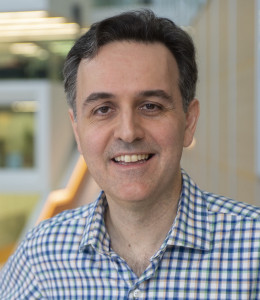Dr Gregory Jefferis

Joint Head, Division of Neurobiology, MRC LMB, Cambridge
Director of Research, Dept of Zoology, University of Cambridge
Contact information
MRC Laboratory of Molecular Biology
Francis Crick Ave
CAMBRIDGE
CB2 0QH
United Kingdom
https://www2.mrc-lmb.cam.ac.uk/group-leaders/h-to-m/gregory-jefferis/
https://www.zoo.cam.ac.uk/research/groups/connectomics
https://scholar.google.com/citations?user=cuXoCA8AAAAJ&hl=en
Biography
Gregory Jefferis is a neuroscientist who studies fundamental principles of the development, structure and function of brain circuits at synaptic resolution, mostly using the fruit fly, Drosophila, as a model system.
Greg received his undergraduate degree from the University of Cambridge before moving to Stanford University in California. There he obtained his PhD in Neurosciences under the supervision of Professor Liqun Luo working on the development of wiring specificity in the fly brain. He then returned to Cambridge as a research fellow of St John’s College and Wellcome Advanced Training Fellow. His work at that time in the Department of Zoology developed new approaches to map the brain with single neuron resolution.
Greg is currently an MRC Investigator and Joint Head of the Division of Neurobiology at the Medical Research Council Laboratory of Molecular Biology in Cambridge. His group uses the vinegar fly, Drosophila, to study neural circuits and behaviour. Greg also holds a secondary appointment in the University of Cambridge Department of Zoology; here he directs the Drosophila Connectomics Group as part of international collaboration with colleagues in Oxford and HHMI Janelia in the USA, funded by the Wellcome Trust. He has received a variety of awards for his research including the Elkins Lecture at Cold Spring Harbor (2003), an EMBO Young Investigator award (2012), a Caltech Moore Distinguished Scholarship (2015), membership of the FENS Kavli Network of Excellence (2016) and the Francis Crick Prize of the Royal Society (2019).
Research interests
We use a range of molecular and computational techniques to probe the development, structure and function of brain circuits at synaptic resolution. Recently this has included major efforts in electron microscopy connectomics, delivering the first complete connectomes for adult Drosophila brain and nerve cord. This work relies on computational techniques including deep learning approaches to segmentation of 100TB+ image volumes, image registration and visualisation of brain samples, statistical and network analyses of circuit connectivity.
Keywords
Bioinformatics, Machine learning, Neuroscience
Publications
Whole-brain annotation and multi-connectome cell typing quantifies circuit stereotypy in Drosophila
Philipp Schlegel, Yijie Yin, Alexander S. Bates, Sven Dorkenwald, Katharina Eichler, Paul Brooks, Daniel S. Han, Marina Gkantia, Marcia dos Santos, Eva J. Munnelly, Griffin Badalamente, Laia Serratosa Capdevila, Varun A. Sane, Markus W. Pleijzier, Imaan F.M. Tamimi, Christopher R. Dunne, Irene Salgarella, Alexandre Javier, Siqi Fang, Eric Perlman, Tom Kazimiers, Sridhar R. Jagannathan, Arie Matsliah, Amy R. Sterling, Szi-chieh Yu, Claire E. McKellar, FlyWire Consortium, Marta Costa, H. Sebastian Seung, Mala Murthy, Volker Hartenstein, Davi D. Bock, Gregory S.X.E. Jefferis
bioRxiv 2023.06.27.546055; doi: https://doi.org/10.1101/2023.06.27.546055
Neuronal wiring diagram of an adult brain
Sven Dorkenwald, Arie Matsliah, Amy R Sterling, Philipp Schlegel, Szi-chieh Yu, Claire E. McKellar, Albert Lin, Marta Costa, Katharina Eichler, Yijie Yin, Will Silversmith, Casey Schneider-Mizell, Chris S. Jordan, Derrick Brittain, Akhilesh Halageri, Kai Kuehner, Oluwaseun Ogedengbe, Ryan Morey, Jay Gager, Krzysztof Kruk, Eric Perlman, Runzhe Yang, David Deutsch, Doug Bland, Marissa Sorek, Ran Lu, Thomas Macrina, Kisuk Lee, J. Alexander Bae, Shang Mu, Barak Nehoran, Eric Mitchell, Sergiy Popovych, Jingpeng Wu, Zhen Jia, Manuel Castro, Nico Kemnitz, Dodam Ih, Alexander Shakeel Bates, Nils Eckstein, Jan Funke, Forrest Collman, Davi D. Bock, Gregory S.X.E. Jefferis, H. Sebastian Seung, Mala Murthy, the FlyWire Consortium
bioRxiv 2023.06.27.546656; doi: https://doi.org/10.1101/2023.06.27.546656
Generating parallel representations of position and identity in the olfactory systemI
István Taisz, Erika Donà, Daniel Münch, Shanice N Bailey, Billy J Morris, Kimberly I Meechan, Katie M Stevens, Irene Varela-Martínez, Marina Gkantia, Philipp Schlegel, Carlos Ribeiro, Gregory SXE Jefferis, Dana S Galili
Cell 186 (12), 2556-2573. e22
Communication from Learned to Innate Olfactory Processing Centers Is Required for Memory Retrieval in Drosophila.
Dolan MJ, Belliart-Guérin G, Bates AS, Frechter S, Lampin-Saint-Amaux A, Aso Y, Roberts RJV, Schlegel P, Wong A, Hammad A, Bock D, Rubin GM, Preat T, Plaçais PY, Jefferis GSXE. (2018)
Neuron 100(3): 651-668.e8.
A Complete Electron Microscopy Volume of the Brain of Adult Drosophila melanogaster.
Zheng Z, Lauritzen JS, Perlman E, Robinson CG, Nichols M, Milkie D, Torrens O, Price J, Fisher CB, Sharifi N, Calle-Schuler SA, Kmecova L, Ali IJ, Karsh B, Trautman ET, Bogovic JA, Hanslovsky P, Jefferis GSXE, Kazhdan M, Khairy K, Saalfeld S, Fetter RD, Bock DD. (2018)
Cell 174(3): 730-743.e22.
NBLAST: Rapid, Sensitive Comparison of Neuronal Structure and Construction of Neuron Family Databases.
Costa, M., Manton, J.D., Ostrovsky, A.D., Prohaska, S., and Jefferis, G.S.X.E. (2016)
Neuron 91: 293-311.
A Bidirectional Circuit Switch Reroutes Pheromone Signals in Male and Female Brains
Kohl, J., Ostrovsky, A.D., Frechter, S. and Jefferis, G.S. (2013)
Cell 155-7: 1610-1623
 Cambridge Centre for
Cambridge Centre for